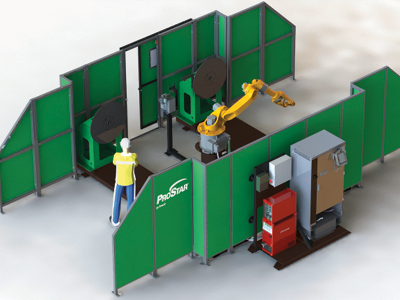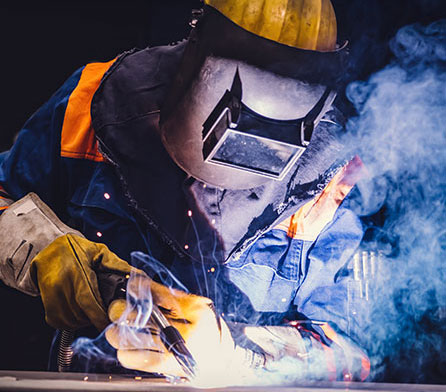6 Practices for Improving the Performance of Your Welding Automation
As the demand for welding services increases, more and more shops are turning to automation. Robotic welding has the potential to bring major productivity gains to just about any manufacturing operation – large or small, high or low volume.
Companies invest in robotic welding systems to improve productivity, gain more consistent weld quality and reduce costs. Robotic welding also can set companies apart from the competition by allowing for faster completion and delivery of products.
Because of the cost for investing in this equipment, it is important to take steps to protect the system and ensure it is operating at its maximum potential. Keep in mind these tips to help you avoid downtime and increase throughput in your operation.
1. Select the Right Consumables

Choosing the right consumables can help you avoid problems down the road. MIG welders are consistently exposed to extreme temperatures. High-quality consumables ensure that performance can be maintained under these high temperatures for long periods of time. It is also important to invest in consumables with commendable durability to minimize unscheduled downtime for your system.
2. Choose the Proper Wire
In your automated welding operation, the demand to produce high quality welds quicker, and with reduced costs, is constant. However, production can be limited when you choose standard welding wire for your automated processes. Cast and helix issues associated with these wires can cause uneven wear on consumables and affect the quality of the weld.
ProStar™ “twist-free” welding wire is an ideal choice for meeting the demands and expectations placed upon automated welding processes for consistently high throughput and quality. It is sourced from a single mill and chosen for its ability to draw clean green rod with high tech. This, along with proprietary descaling, drawing and coating processes help to create a premium welding wire with no cast or helix and delivers predictive results weld after weld.
3. Prevent Poor Wire Feeding
We already talked about the importance of choosing a proper wire. Another essential component to building a high-performance weld cell and achieving maximum quality and productivity is optimizing wire delivery. Wire feed issues can result in downtime, wasted consumables and weld quality issues.
Additionally, Linde’s ProStar 24/7 wire feed system improves the productivity of your robotic MIG welding cells by allowing for a continuous delivery of welding wire. The 24/7 system’s dual wire drum setup, changeover swingarm and conduit system minimizes wire runout interruptions, helping you protect your robotic cell’s productivity.
4. Use Appropriate Tooling
The variety of possibilities for a welded part’s intended shape, size and profile requires unique, custom engineered tooling fixtures for each application. Using tooling suited to the volume and variation of the parts being produced in a robotic welding application is essential to ensuring quality and productivity. In addition to securing the parts so that the robotic welding system can execute consistent welds, the proper tooling can also have a measurable impact on the comfort and efficiency of the operators loading and unloading parts.

Some robotically welded products are simple requiring basic tooling needs. Others can be quite complex. Linde can provide custom tooling and fixtures that suit your specific automation process and product needs.
5. Don’t Neglect Preventative Maintenance
Preventive maintenance for robotic cells can be important in reducing unscheduled cell shutdowns. Preventive maintenance of the entire welding system, including the robotic torch, consumables and cables is an important step in protecting your investment in this technology. Scheduling time to check connections throughout the system, clean fixturing and confirming tool center point (TCP), for instance, helps ensure that the system continues to operate within its proper parameters, delivering consistent welds.
6. Embrace Training
Automated welding helps make the work easier, but it doesn’t mean that it will solve your welding problems. As such, working with knowledgeable welders is a necessity to avoid potential pitfalls. With equipment, consumable and technological changes occurring regularly, it’s important to stay up to date through webinars and other online training, as well as industry and manufacturer publications.




























